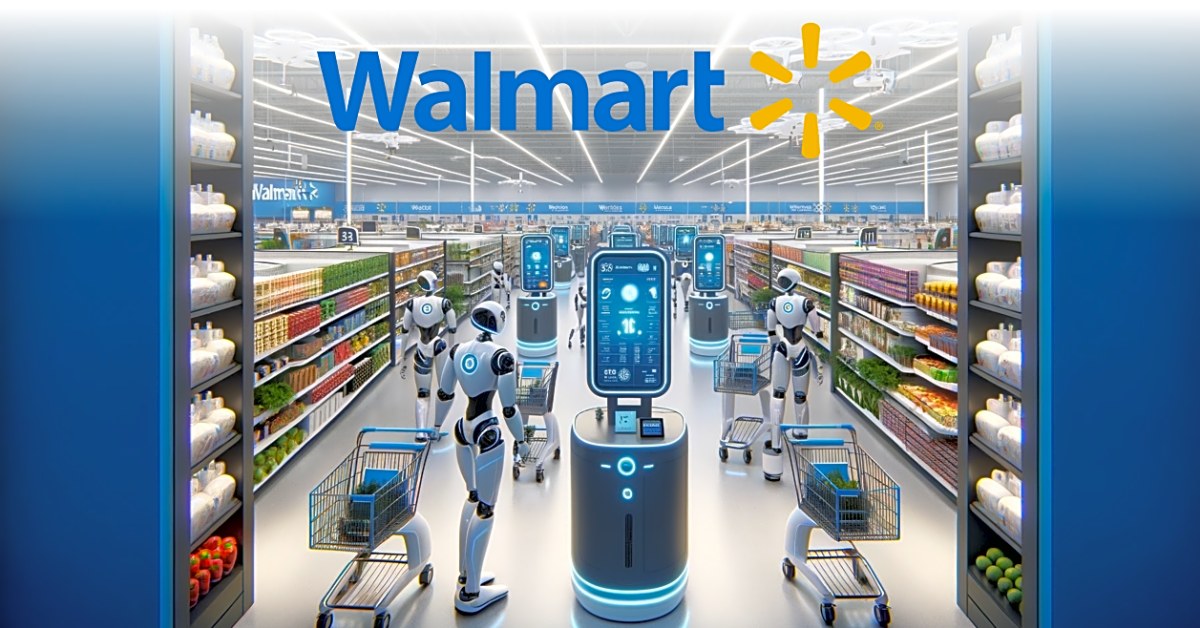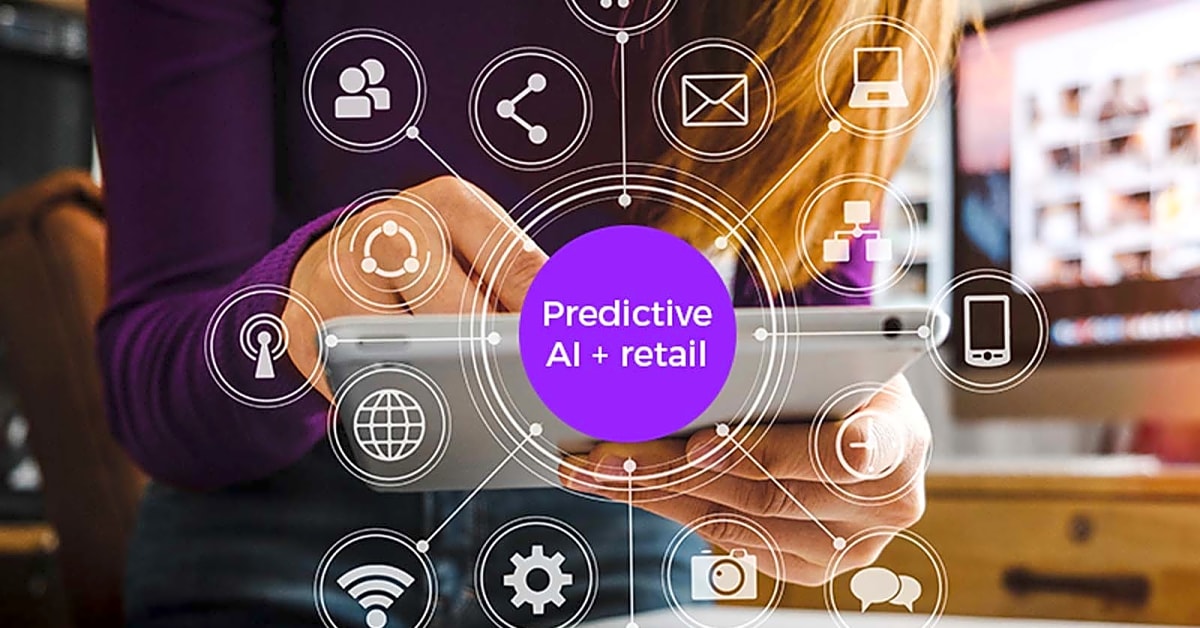Walmart is a retail giant that is constantly pushing the boundaries of innovation in the industry. One such example is their AI-optimized supply chain, which has revolutionized the way they manage their inventory and logistics. In this article, we will take a deep dive into Walmart’s AI-optimized supply chain and explore how it has helped them achieve success in the competitive retail market. From the implementation of advanced algorithms to the use of cutting-edge technology, we will uncover the key elements that make Walmart’s supply chain stand out. Join us as we delve into this successful case study of AI in marketing, specifically in the retail industry.
To understand the significance of Walmart’s AI-Optimized Supply Chain, it is essential to first understand what AI is and how it works. AI refers to the simulation of human intelligence in machines that are programmed to think and act like humans. It utilizes technologies such as machine learning, deep learning, and natural language processing to analyze and process vast amounts of data, identify patterns, and make decisions without human intervention. In the case of Walmart, they have integrated AI into their supply chain to enhance efficiency, reduce costs, and improve customer experience.
Customer segmentation is a crucial aspect of marketing that involves dividing customers into specific groups based on similar characteristics or behaviors. By implementing AI in their supply chain, Walmart can gather and analyze data on customer purchases, preferences, and behaviors to create more accurate customer segments. This allows them to tailor their marketing efforts to target specific groups with personalized offers and promotions, ultimately improving the overall customer experience.
Another key benefit of Walmart’s AI-Optimized Supply Chain is its ability to predict future demand for products. Through machine learning algorithms, the system can analyze sales data and identify patterns that help predict which products will be in demand at specific times. This enables Walmart to optimize their inventory levels, reduce waste, and ensure that popular items are always in stock. Moreover, this predictive capability also helps Walmart make informed decisions on pricing, promotions, and marketing strategies.
Chatbots have become increasingly popular in the world of marketing as they offer a more personalized and efficient way to communicate with customers. Walmart has successfully integrated chatbots into their AI-Optimized Supply Chain to provide customers with real-time support and assistance. These chatbots use natural language processing to understand and respond to customer inquiries, providing a seamless and personalized shopping experience. For example, a customer can ask the chatbot for recommendations on a product, and it will use the customer’s purchase history and preferences to suggest relevant items.
Some may argue that implementing AI in retail operations eliminates the need for human workers. However, Walmart has shown that this is not the case. While AI has automated many tasks in their supply chain, it has also created new job opportunities for human workers. For instance, Walmart now employs data analysts and engineers to manage and analyze the vast amounts of data collected by their AI-Optimized Supply Chain.
Overall, Walmart’s AI-Optimized Supply Chain has been a game-changer in the retail industry. It has not only improved efficiency and reduced costs for the company but has also enhanced the overall customer experience. By utilizing AI for customer segmentation, predictive analytics, and chatbots for personalized marketing, Walmart has set an example for other retailers to follow.
Human vs. AI in the Workplace
In recent years, there has been a lot of fear and speculation surrounding the idea of AI replacing human workers. However, Walmart’s successful implementation of AI in their supply chain proves that this is not the case. Instead, AI and humans are working together to create a more efficient and effective workplace. Let’s take a closer look at how this partnership is benefiting both Walmart and its employees.
Revolutionizing Customer Segmentation
In today’s competitive retail industry, understanding and effectively targeting customers is crucial for success. With the help of Artificial Intelligence (AI), Walmart has revolutionized their customer segmentation process, allowing them to create more accurate and detailed customer profiles.
Traditionally, businesses have relied on basic demographic information such as age, gender, and location to segment their customers. However, with AI, Walmart is able to analyze a vast amount of data from various sources, including customer interactions, purchase history, and online behavior. This allows for a deeper understanding of customer preferences, needs, and behaviors, leading to more personalized marketing strategies.
By using AI to create more accurate customer segments, Walmart is able to target specific groups of customers with tailored promotions, offers, and recommendations. This not only improves the overall customer experience but also increases the effectiveness of their marketing efforts.
The Power of AI in Retail
The use of artificial intelligence (AI) has revolutionized the retail industry, providing businesses with a competitive edge and improving customer experience. AI refers to the simulation of human intelligence processes by machines, particularly computer systems. This technology allows computers to learn from data, identify patterns, and make decisions with minimal human intervention. In the retail industry, AI has been applied in various areas such as supply chain management, customer segmentation, predictive analytics, and personalized marketing. With the rise of AI in marketing, it is crucial for businesses to understand what AI is and how it works to fully utilize its potential.
At its core, AI involves the use of algorithms and machine learning to analyze large sets of data and make predictions or decisions based on the results. These algorithms are continuously refined and improved through a process called deep learning, where the computer learns from its own mistakes and becomes more accurate over time. This enables AI systems to handle complex tasks and provide valuable insights that can drive business growth. Through AI, retailers like Walmart have been able to optimize their supply chain operations and enhance their marketing strategies to deliver personalized experiences to their customers.
Personalized Marketing with Chatbots
One of the key ways that Walmart has utilized AI in their marketing strategy is through chatbots. These AI-powered tools have transformed the customer experience by providing personalized interactions and assistance.
Chatbots are computer programs that simulate conversation with human users, and they have become increasingly popular in the retail industry. With the rise of messaging apps and the need for instant communication, chatbots provide a convenient and efficient way for customers to interact with businesses.
Walmart’s chatbots use AI algorithms to analyze customer data and provide personalized recommendations and assistance. This not only improves the customer experience, but also allows Walmart to gather valuable insights about their customers’ preferences and behaviors.
By utilizing chatbots, Walmart has been able to tailor their marketing efforts and promotions to individual customers, leading to more effective and targeted campaigns. Customers feel more engaged and valued when they receive personalized recommendations, which in turn leads to increased loyalty and satisfaction.
Moreover, chatbots have also helped Walmart with customer service by providing quick and accurate responses to inquiries and complaints. This has significantly reduced the workload for customer service representatives and improved overall customer satisfaction.
In conclusion, Walmart’s use of AI-powered chatbots has greatly enhanced the customer experience by providing personalized interactions and assistance. With the continued advancements in AI technology, we can expect to see even more innovative uses of chatbots in the future of retail marketing.
Predicting Future Demand
With the rise of Artificial Intelligence (AI) in marketing, businesses are constantly seeking new ways to leverage this technology to improve their digital marketing strategies. One area where AI has had a significant impact is in predicting future demand for products and optimizing inventory levels.
Walmart’s AI-Optimized Supply Chain utilizes advanced algorithms and machine learning to analyze customer data, historical sales, and market trends to accurately predict future demand for products. This allows Walmart to make informed decisions about inventory levels and avoid overstocking or understocking of products.
Through the use of AI, Walmart is able to optimize their inventory levels and reduce costs associated with excess inventory or missed sales opportunities. This not only benefits Walmart’s bottom line but also ensures that customers are able to find the products they want when they want them, leading to a better overall shopping experience.
Additionally, AI plays a crucial role in decision-making for Walmart’s supply chain. By analyzing various factors such as customer behavior, weather patterns, and economic conditions, AI helps Walmart make data-driven decisions about which products to stock, when to order more, and how much to order.
This level of predictive analytics and decision-making would not be possible without the use of AI in Walmart’s supply chain. It has revolutionized the retail industry by allowing companies to be more efficient, reduce costs, and better serve their customers.
In conclusion, Walmart’s AI-Optimized Supply Chain has set a precedent for the use of AI in retail. By leveraging this technology, Walmart has been able to improve their operations, reduce costs, and most importantly, provide a better shopping experience for their customers. As AI continues to evolve and integrate into various industries, it will be interesting to see how other retailers follow in Walmart’s footsteps.


